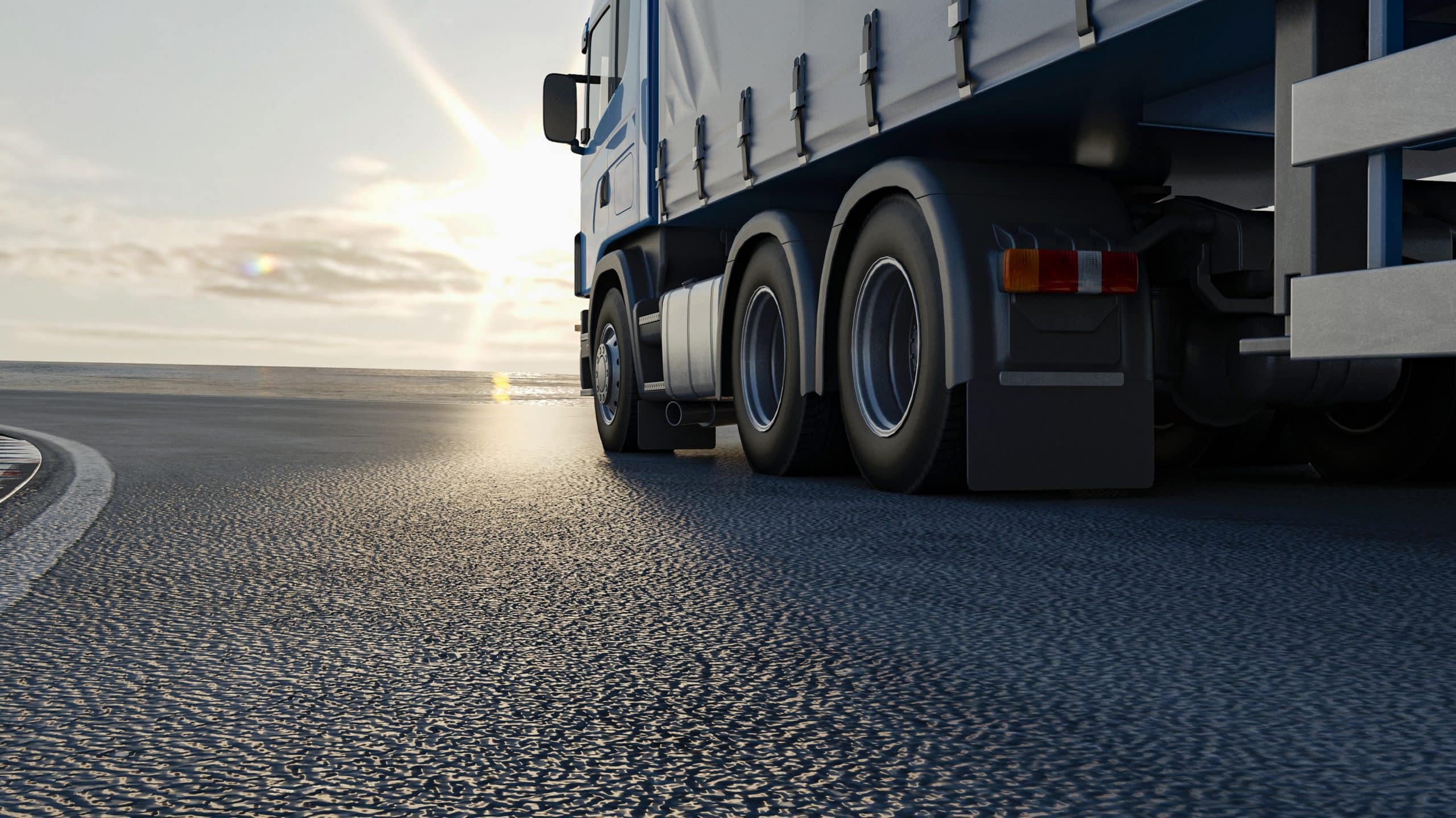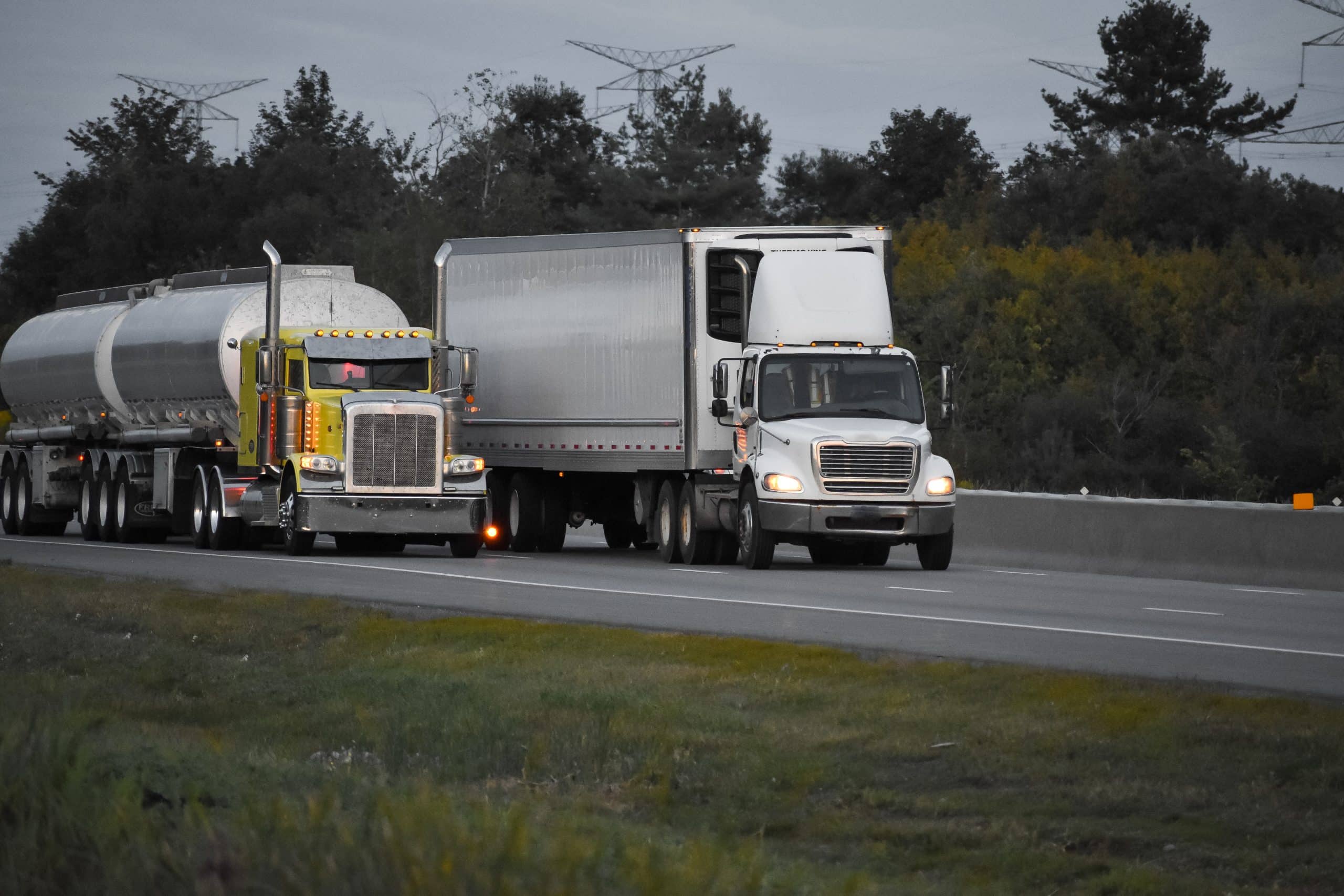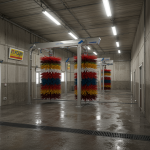When it comes to maintaining a fleet of vehicles, efficiency is key. And one area that often goes overlooked is the process of keeping those vehicles clean. That’s where an automatic truck wash comes in. Not only does it save time and manpower, but it also has a significant impact on the bottom line.
By calculating the savings of an automatic truck wash, fleet managers can see just how much money they’re saving in terms of labor costs, water usage, and cleaning supplies. With the ability to wash multiple vehicles simultaneously, an automatic truck wash maximizes productivity while minimizing expenses.
Not only does this increase financial efficiency, but it also ensures vehicles are consistently clean, promoting a professional image for the company. And with the right maintenance plan in place, the cost of repairs and premature wear and tear can be reduced.
Investing in an automatic truck wash is a smart move for any fleet owner. By understanding the financial benefits, it becomes clear that this is one expense that actually saves money in the long run. So, why waste time and money on manual washing when there’s a more efficient and cost-effective alternative?
Advantages of automatic truck wash systems
Automatic truck wash systems offer numerous advantages over traditional manual washing methods. These advantages not only save time and effort but also have a significant impact on the financial efficiency of fleet management.
Firstly, an automatic truck wash eliminates the need for manual labor. Manual washing involves hiring and training staff, allocating time for the task, and dealing with the physical strain of scrubbing and cleaning. With an automatic system, trucks can be washed simultaneously, reducing the time required to clean the entire fleet. This frees up labor resources, allowing employees to focus on other important tasks, leading to increased productivity and cost savings.
Secondly, an automatic truck wash system optimizes water usage. Traditional manual washing methods often involve excessive water consumption, as it is difficult to control the amount of water used. Automatic systems, on the other hand, are designed to use water efficiently, minimizing waste. This not only reduces water bills but also contributes to environmental sustainability, an increasingly important consideration for businesses in today’s world.
Another advantage of automatic truck wash systems is the reduction in cleaning supply costs. Manual washing typically requires a variety of cleaning agents, brushes, and other accessories, all of which need to be purchased and replenished regularly. With an automatic system, the amount of cleaning supplies needed is significantly reduced, resulting in cost savings in the long run. Additionally, automatic systems often use specialized cleaning solutions that are more effective and efficient than traditional methods, further enhancing the cleanliness of the trucks.
Overall, the advantages of automatic truck wash systems are clear. They save time, reduce labor costs, optimize water usage, minimize cleaning supply expenses, and contribute to a professional brand image. Now, let’s delve into the process of calculating the savings associated with these systems.

Factors to consider when calculating savings
Calculating the savings of an automatic truck wash involves considering various factors that contribute to the overall cost reduction. By analyzing these aspects, fleet managers can gain a comprehensive understanding of the financial benefits and make informed decisions regarding the implementation of an automatic washing system.
The first factor to consider is labor costs. Manual truck washing requires dedicated staff to carry out the task, which adds to the overall payroll expenses. With an automatic system, the need for manual labor is significantly reduced, resulting in cost savings. To calculate the savings in labor costs, fleet managers can compare the number of hours spent on manual washing with the time saved by using an automatic system. By multiplying the saved hours by the average hourly wage of the employees, the potential labor cost savings can be determined.
Next, water usage plays a crucial role in calculating the savings. Traditional manual washing methods often involve excessive water consumption, leading to higher water bills. Automatic truck wash systems are designed to use water efficiently, minimizing waste. By comparing the water consumption of manual washing with that of an automatic system, fleet managers can estimate the potential reduction in water usage and calculate the associated cost savings. Multiplying the estimated water savings by the cost per gallon or cubic meter of water provides an estimate of the potential financial benefit.
Cleaning supplies are another significant expense in truck washing. Manual washing requires a variety of cleaning agents, brushes, and other accessories, all of which need to be purchased and replenished regularly. With an automatic system, the amount of cleaning supplies needed is significantly reduced. Fleet managers can calculate the savings in cleaning supplies by comparing the usage and cost of supplies in manual washing with that of an automatic system. By multiplying the estimated supply savings by the cost of the cleaning agents and accessories, the potential cost reduction can be determined.
In addition to direct savings, an automatic truck wash system can also contribute to indirect cost reductions. For example, regular cleaning and maintenance of trucks help prevent premature wear and tear, reducing the need for repairs and replacement parts. This can result in significant cost savings in the long run. By considering the potential reduction in repair and maintenance expenses, fleet managers can include this aspect in their overall calculation of savings.
Overall, calculating the savings of an automatic truck wash system requires a comprehensive analysis of labor costs, water usage, cleaning supplies, and potential indirect cost reductions. By considering these factors, fleet managers can determine the true financial benefits of implementing an automatic washing system.
How to calculate the savings of an automatic truck wash
Calculating the savings of an automatic truck wash involves considering various factors that contribute to the overall cost reduction. By analyzing these aspects, fleet managers can gain a comprehensive understanding of the financial benefits and make informed decisions regarding the implementation of an automatic washing system.
The first factor to consider is labor costs. Manual truck washing requires dedicated staff to carry out the task, which adds to the overall payroll expenses. With an automatic system, the need for manual labor is significantly reduced, resulting in cost savings. To calculate the savings in labor costs, fleet managers can compare the number of hours spent on manual washing with the time saved by using an automatic system. By multiplying the saved hours by the average hourly wage of the employees, the potential labor cost savings can be determined.
Next, water usage plays a crucial role in calculating the savings. Traditional manual washing methods often involve excessive water consumption, leading to higher water bills. Automatic truck wash systems are designed to use water efficiently, minimizing waste. By comparing the water consumption of manual washing with that of an automatic system, fleet managers can estimate the potential reduction in water usage and calculate the associated cost savings. Multiplying the estimated water savings by the cost per gallon or cubic meter of water provides an estimate of the potential financial benefit.
Cleaning supplies are another significant expense in truck washing. Manual washing requires a variety of cleaning agents, brushes, and other accessories, all of which need to be purchased and replenished regularly. With an automatic system, the amount of cleaning supplies needed is significantly reduced. Fleet managers can calculate the savings in cleaning supplies by comparing the usage and cost of supplies in manual washing with that of an automatic system. By multiplying the estimated supply savings by the cost of the cleaning agents and accessories, the potential cost reduction can be determined.
In addition to direct savings, an automatic truck wash system can also contribute to indirect cost reductions. For example, regular cleaning and maintenance of trucks help prevent premature wear and tear, reducing the need for repairs and replacement parts. This can result in significant cost savings in the long run. By considering the potential reduction in repair and maintenance expenses, fleet managers can include this aspect in their overall calculation of savings.
Overall, calculating the savings of an automatic truck wash system requires a comprehensive analysis of labor costs, water usage, cleaning supplies, and potential indirect cost reductions. By considering these factors, fleet managers can determine the true financial benefits of implementing an automatic washing system.

Case studies: Real-life examples of savings from automatic truck wash systems
To further illustrate the financial benefits of automatic truck wash systems, let’s take a look at some real-life case studies. These examples highlight the cost savings experienced by fleet owners who have implemented an automatic washing system, providing tangible evidence of the potential financial efficiency.
Case Study 1: ABC Trucking
ABC Trucking is a large fleet operating in a region with strict environmental regulations regarding water usage. The fleet consists of 100 trucks that require regular cleaning due to the nature of their operations. Before implementing an automatic truck wash system, ABC Trucking employed a dedicated team of five employees responsible for manual washing. This process took an average of 30 minutes per truck, resulting in significant labor costs and water consumption.
After installing an automatic truck wash system, ABC Trucking experienced a 70% reduction in labor costs and a 50% decrease in water usage. The time required to wash each truck was reduced to 10 minutes, allowing the five employees to focus on other important tasks. By calculating the savings in labor costs and water usage, ABC Trucking estimated an annual cost reduction of $150,000. This significant financial benefit justified the initial investment in the automatic truck wash system and allowed ABC Trucking to allocate resources to other areas of the business.
Case Study 2: XYZ Logistics
XYZ Logistics operates a medium-sized fleet of 50 trucks involved in long-haul transportation. The fleet is spread across multiple locations, making it difficult to maintain consistent cleaning standards. Manual washing proved to be time-consuming and inefficient, resulting in inconsistent cleanliness and increased repair costs due to premature wear and tear.
By implementing an automatic truck wash system, XYZ Logistics achieved a 40% reduction in labor costs and a 30% decrease in repair expenses. The ability to wash multiple trucks simultaneously allowed for more frequent and consistent cleaning, reducing the need for repairs and replacement parts. By calculating the savings in labor costs and repair expenses, XYZ Logistics estimated an annual cost reduction of $80,000. This significant financial benefit not only improved the bottom line but also enhanced the overall condition and performance of the fleet.
These case studies demonstrate the tangible cost savings achieved through the implementation of automatic truck wash systems. The specific results may vary depending on the fleet size, location, and operational requirements, but the overall financial benefits are consistently evident. These examples serve as real-life proof that investing in an automatic truck wash system can lead to significant cost reductions and improved financial efficiency.
Choosing the right automatic truck wash system for your fleet
When considering the implementation of an automatic truck wash system, it’s crucial to choose the right solution that meets the specific needs and requirements of your fleet. There are various factors to consider when selecting the most suitable system.
Firstly, the capacity and throughput of the system should align with the size of your fleet. It’s important to choose a system that can handle the number of trucks requiring regular cleaning without causing delays or bottlenecks. The system should be capable of washing multiple vehicles simultaneously, ensuring optimal productivity and efficiency.
The design and features of the system should also be evaluated. Look for systems that provide thorough and effective cleaning, including features such as high-pressure water jets, rotating brushes, and specialized cleaning solutions. The system should be able to remove stubborn dirt and grime from various parts of the trucks, ensuring a consistently clean and polished appearance.
Consider the ease of maintenance and upkeep when selecting an automatic truck wash system. Look for systems that are designed for easy maintenance, with user-friendly interfaces and accessible components. Regular maintenance is essential to ensure the system operates at its best and continues to deliver the desired cost savings.
Cost is, of course, a crucial consideration when choosing an automatic truck wash system. Evaluate the initial investment required, including installation costs and any additional equipment needed. Compare the ongoing operational costs, including water, electricity, and maintenance, with the potential savings achieved through reduced labor, water usage, and cleaning supplies. By conducting a comprehensive cost-benefit analysis, fleet managers can determine the most cost-effective solution for their specific fleet.
Lastly, consider the reputation and reliability of the manufacturer or supplier. Look for companies with a proven track record in the industry, providing high-quality and reliable automatic truck wash systems. Customer reviews and testimonials can provide valuable insights into the performance and durability of the system. Investing in a reputable system ensures long-term reliability and peace of mind.
By taking these factors into consideration, fleet managers can choose the right automatic truck wash system that maximizes financial efficiency and meets the unique needs of their fleet.

Maintenance and upkeep of automatic truck wash systems
To ensure the continued financial efficiency and performance of an automatic truck wash system, proper maintenance and upkeep are essential. Regular maintenance not only extends the lifespan of the system but also minimizes the risk of breakdowns and costly repairs.
The manufacturer’s guidelines should be followed for routine maintenance tasks. This may include regular inspections, cleaning of filters, lubrication of moving parts, and checking for any signs of wear or damage. By adhering to the recommended maintenance schedule, fleet managers can identify and address potential issues early on, preventing more significant problems and costly downtime.
Additionally, consider implementing a preventive maintenance plan. This involves conducting scheduled maintenance tasks, such as replacing worn-out components, on a regular basis, regardless of whether there are any visible issues. Preventive maintenance helps identify and address potential problems before they escalate, ensuring the system operates at its best and continues to deliver the desired cost savings.
Regular training of staff responsible for operating and maintaining the automatic truck wash system is also crucial. Ensure that employees are familiar with the system’s features, controls, and safety procedures. This helps minimize the risk of accidents or improper use that could lead damage to vehicles or equipment.
Conclusion, Key Points of Automatic Truck Wash Cost Savings
In today’s fast-paced world, efficiency and cost savings are crucial for businesses in every industry. When it comes to fleet management and truck maintenance, an automatic truck wash system can be a game-changer. By understanding the potential cost savings of investing in an automated truck wash, businesses can make informed decisions that will benefit their bottom line.
The key factors influencing cost savings in an automatic truck wash include the initial investment cost, labor cost reduction, water consumption efficiency, chemical and detergent usage, energy efficiency, reduced truck maintenance with clean trucks, and environmental benefits.
While the initial investment may seem steep at first glance, it is important to consider the long-term benefits. With an automated system in place, companies no longer need to rely on manual labor or expensive third-party services for washing their fleet. This leads to significant labor cost reductions over time.
Water consumption efficiency also plays a crucial role in reducing costs. Traditional methods often result in excessive water usage whereas automated systems are designed to optimize water consumption without compromising cleanliness standards.
Furthermore, automatic truck wash systems employ advanced technologies that minimize chemical and detergent usage while still achieving excellent cleaning results. This not only saves money but also reduces environmental impact by minimizing harmful runoff into local ecosystems.
Energy efficiency is another aspect where automatic truck washes shine. These systems are engineered to minimize energy consumption through innovative design features such as low-power motors and efficient heating mechanisms. By utilizing less energy during each washing cycle, companies can significantly reduce operating costs over time.
Clean trucks not only enhance brand image but also contribute towards reducing maintenance costs associated with dirt buildup on vehicles’ exteriors or corrosion caused by road debris clinging onto surfaces over time. Regularly washing trucks using an automated system helps maintain their condition for longer periods between major service intervals – ultimately saving companies money on repairs and replacements down the line.
Lastly, there are undeniable environmental benefits to using an automatic truck wash. By minimizing water consumption, reducing chemical usage, adding speed to the wash and cleaning process make it the preferred wash method among fleet operators. Automatic truck washes are also slowly becoming more accepted by owner-operator truck drivers.




